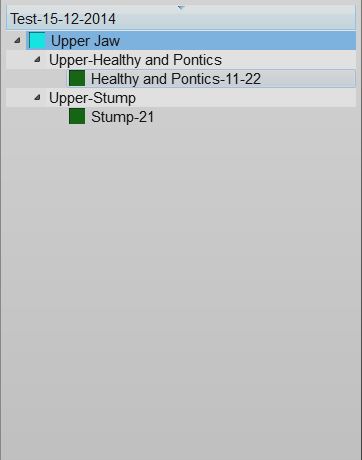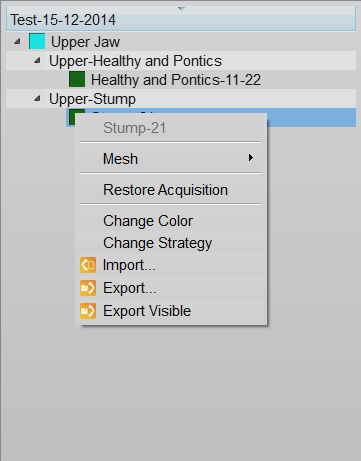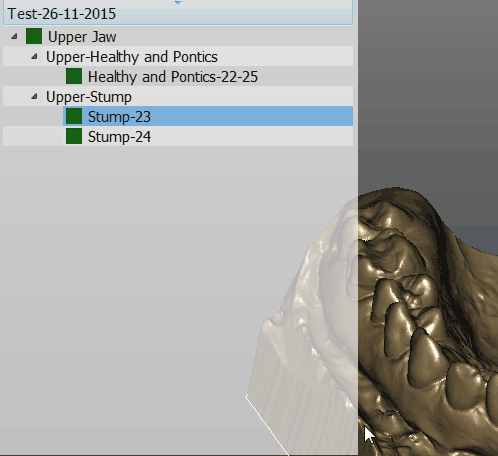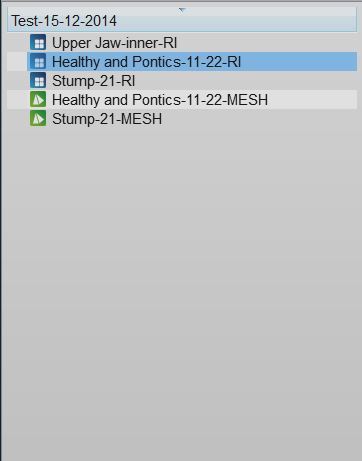Difference between revisions of "Project Tree/pt-br"
(Created page with "* '' Não Data (Caixa Cinza) '': este elemento é necessário para que o projeto seja completo, mas não há dados disponíveis. Este elemento precisa ser importado ou digital...") |
(Created page with "É possível interagir com a árvore do projeto:") |
||
| Line 21: | Line 21: | ||
* '' Mahas (Caixa Verde) '': há uma '''malha''' deste elemento. É possível editar esses dados e exportá-lo. | * '' Mahas (Caixa Verde) '': há uma '''malha''' deste elemento. É possível editar esses dados e exportá-lo. | ||
| − | + | É possível interagir com a árvore do projeto: | |
# Left Click on an element to select it | # Left Click on an element to select it | ||
Revision as of 22:02, 1 October 2015
Contents
Projeto Arvore
A caixa superior esquerda da interface do software é o painel de gestão do projeto, que contém todos os dados adquiridos e modificados.
As árvores do projeto de modo estruturado e livre são diferentes.
Projeto Estruturado
Esta imagem mostra um exemplo de uma árvore de projeto estruturado:
Status de dados e Seleção
Existem três diferentes status que definem cada objeto do projeto, cada status é marcado por diferentes caixas de cor:
- Não Data (Caixa Cinza) : este elemento é necessário para que o projeto seja completo, mas não há dados disponíveis. Este elemento precisa ser importado ou digitalizado.
- Adquirida (Caixa Azul) : há uma aquisição deste elemento. É possível alinhar estes dados com o resto do projeto, editá-lo ou convertê-lo em formato de malha.
- Mahas (Caixa Verde) : há uma malha deste elemento. É possível editar esses dados e exportá-lo.
É possível interagir com a árvore do projeto:
- Left Click on an element to select it
- Left Click keeping CTRL pressed on an element to add it to the current selection
- Right click on an element to open the Element Context Menu
- Left Click outside the list to clear the current selection
All the selected items will be visible in the 3D View and the software will activate the buttons for all the available actions of the menus, the Main Toolbar and the Support Toolbars according to the current selection.
The information is layed out as a tree; each element can have children elements. This scheme represents the information dependency in the project. For example a single stump is part of a jaw so it's a child of the jaw and the software, when asked to align the stump to the rest of the project, will align it to its parent jaw.
Context Menu
By right clicking on a Project Tree element, a context menu will appear:
The context menu shows:
- A Sub Menu with the tools for the selected element (Mesh, Acquisition)
- A Restore Acquisition button that will remove a mesh and recover the previous acquisition
- A Change Color button that will change the assigned color of this element, used in the 3D View
- A Change Strategy button that will change the scan and mesh strategy of this element
- An Import... button that will import an acquisition or mesh from the disk, in the supported formats
- An Export... button that will export the acquisition or mesh to the disk, in a supported format
- An Export Visible button that will merge and export all the current selected meshes in one single file
Drag And Drop
You can drag one element and drop it over a different one
The available actions will be:
- Clone to create a copy of this element
- Move To ... to clone the element and remove the original one
Free Project
This is a screenshot of a Free Project Tree
In the Free Project mode, the software has no way of knowing the dependencies between the data. So there's no tree, no children. Only a list of objects.
The objects can be of 2 types. Acqusitions (blue icon) or Meshes (green icon).
This project type usually works as the Structured Project.
The differences are:
- To create a copy of a data, it is necessary to open the context menu and select the Clone function.
- By dragging one element above another, it is possible to choose between:
- The Direct Alignment: action to automatically align the two elements.
- The Manual Alignment: action to manually align the two elements.






